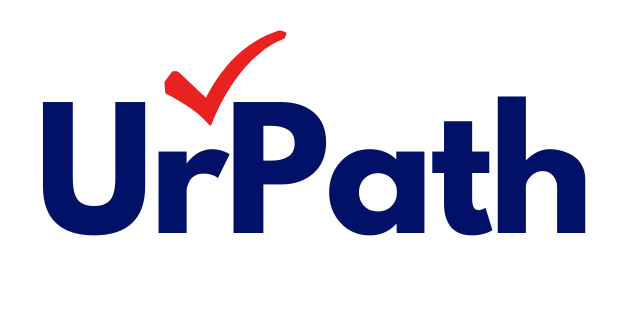The Critical Role of International Student Recruitment Agencies in Boosting Enrollment
Hayoung Kim • November 21, 2024
Book Your Free Initial Consultation Today
Unlocking Global Potential: Strategies for International Student Recruitment

In an increasingly competitive global market, universities and colleges are striving to grow their international student populations. For decision-makers like vice provosts, provosts, presidents, vice presidents, and directors of recruitment, understanding how to effectively recruit international students is not just a priority—it’s a necessity
This blog outlines why working with reputable international student recruitment agencies is essential, highlights best practices for building and maintaining strong relationships with them, and explores strategies to stay competitive in a challenging recruitment landscape.
Why International Recruitment Agencies Are Key Partners
For many international students and their families, recruitment agencies are the first and most critical point of contact with your institution. These agencies bridge the gap between families unfamiliar with the U.S. education system and the universities looking to enroll international students. They provide critical information on admission processes, program offerings, and even local community details, which parents often rely on when helping their children choose an institution.
Parents, particularly those of minor students, play a significant role in deciding where their child will study. Because they may not speak English fluently or fully understand the nuances of the U.S. education system, families often turn to agencies for guidance. If an agency prioritizes your institution in its recommendations, it can significantly influence a family’s decision. However, for this to happen, maintaining a strong, reliable relationship with the agency is crucial.
Best Practices for Managing Agency Relationships
Work Only With Reputable Agencies
Not all agencies operate with integrity. Before partnering, conduct due diligence to ensure the agency represents your institution honestly and does not exploit students. Agencies should have a track record of ethical practices and be focused on student success.
In my personal experience, I saw firsthand how working with dishonest agencies can negatively impact both students and an institution’s reputation. I cannot mention the specific names of the organizations or institutions I worked for at the time due to confidentiality. However, during that period, I dealt with a student from Indonesia whose agent had provided her with false information about her program of study. The agent had misled the student about the program she was entering, and upon arrival in the U.S., the student discovered she had been signed up for a completely different program.
This misrepresentation caused immense frustration for the student, leading her to transfer out of the institution after her first semester. The agency had not only damaged the student’s trust but also caused harm to the institution’s reputation. The agent had admitted to lying because they didn’t know how to correctly fill out applications for the program the student actually wanted. It was easier for them to send the student to the institution I was working for at the time.
Following this incident, we made the decision to stop working with the agent to protect the institution's reputation and ensure students' rights were prioritized. Working with agencies that are honest and transparent is critical. Sweet-talking students into decisions that serve the agency’s convenience rather than the student’s needs only leads to poor representation and frustration.
Evaluate Your Agency Partnerships
Before signing contracts, ensure your agency partners understand and value your institution’s mission. An agency that cares about students’ interests and accurately represents your institution is far more likely to foster successful, long-term relationships.
Also, it’s important to note that some agencies prioritize their own financial incentives over student interests. For example, some agencies work with schools that offer the highest commission rates, regardless of whether those schools align with a student’s needs.
In my personal experience, I witnessed this firsthand during a trip to the southern part of China. Due to confidentiality and an NDA I signed, I cannot disclose the company I was working for or the agency's name. However, during a meeting with an agency owner, he began the discussion by presenting a binder filled with commission rates from various institutions. He started our meeting by asking, “How much commission are you offering me?” before I could respond, he flipped through the binder and stated, “Your organization pays X. I know that. But I am in this business to make money. By sending my students to this other institution, I make X more per student. This adds up to X more money per year. Do you understand? Unless you can offer me more commission, I would like to dismiss you from this meeting.”
When I attempted to explain the value of the education and the support our institution offered to students, he showed no interest, stating that I was wasting his time. The meeting ended abruptly, and I left the office. While I cannot say this agency was not reputable—they may very well be—I walked away questioning whether my institution should work with an agency that prioritizes profits over student needs.
This experience raises a fundamental question: Does your institution want to partner with agencies that prioritize financial incentives over integrity? While institutions offering high commissions may be excellent in their own right, your university must decide whether to engage with agencies that push students toward institutions based solely on commission rates rather than what’s best for the students.
Direct Student Engagement Through Roadshows and Trade Shows
Another powerful strategy for international recruitment is participating in roadshows or international education trade shows, where you can meet students and their families directly. Many large agencies organize their own roadshows or trade shows, inviting partner universities to showcase their programs. While participation typically involves fees, the return on investment can be substantial.
I’ve had the privilege of participating in several roadshows with Oh! Study and UKEAS (now merged with IDP). These events were not only highly effective but also incredibly well-organized. These agencies conducted extensive in-country marketing to attract potential students and their families, then coordinated multi-city tours in regions like Taiwan, traveling to Taipei, Taichung, Tainan, and Kaohsiung.
The agencies handled most of the logistics, ensuring a smooth and productive experience for participating universities. They even provided interpreters for institutions that needed language assistance, further enhancing communication with prospective students and their families. Traveling as part of a group also provided a safe and structured way to experience student recruitment in different countries while gaining valuable cultural insights.
The Importance of Timely and Accurate Communication
Agencies face significant challenges in managing students, parents, and universities. Slow responses or inaccurate information from institutions can damage your reputation and jeopardize your relationships with agencies. To avoid this:
- Respond Quickly: Aim to reply to inquiries within 24–48 business hours, especially for urgent matters.
- Provide Accurate Information: Miscommunication about admission terms, scholarships, or I-20s can harm not only your reputation but also the agency’s.
Agencies must deliver excellent customer service to remain competitive in their local markets. If your institution fails to provide timely, accurate answers, agencies may choose to prioritize other partners that are more responsive.
Building and Maintaining Strong Relationships with Agencies
- Stay Engaged Through Webinars and Updates: Hosting regular webinars and training sessions keeps agencies informed about your institution’s programs, updates, and promotional opportunities. However, avoid overwhelming them with excessive communication—monthly or quarterly updates are sufficient.
- Foster Personal Connections: Meetings, dinners, or social gatherings during recruitment trips help build rapport and ensure your institution stays top of mind for agencies.
- Invest in Cultural Sensitivity: Understanding the unique needs and preferences of students and parents from different cultures can strengthen your agency relationships and improve your recruitment outcomes.
Networking Through Conferences and Events
If you’re looking to establish relationships with agencies or sign contracts, attending industry-leading events and conferences is an excellent starting point. Reputable organizations like The PIE News, ICEF, and NAFSA host events that gather institutions and agencies to foster collaboration and discuss trends in international education.
- The PIE News Events: These events bring together institutions and agencies to discuss the latest developments in the international education sector. They are a valuable platform for networking and staying informed.
- ICEF Conferences: As a regular attendee, I can attest to the benefits of these events. They gather institutions of all levels—including K-12 schools, universities, graduate programs, and language schools—and agencies for one-on-one speed meetings. These conferences facilitate relationship-building and allow institutions to showcase their programs.
- NAFSA: Known as one of the largest international education events globally, NAFSA is a must-attend for institutions seeking to expand their international reach.
These conferences are ideal for fostering relationships, learning about market trends, and connecting with agencies that align with your institution’s goals.
Consultation: How UrPath Can Help
By strategically partnering with reputable international student recruitment agencies and leveraging industry events, your institution can attract top-tier international students and achieve its enrollment goals.
At UrPath, we take the time to understand your institution as if it were our own. We learn your values, mission, and goals to hand-select reputable agencies that align with your vision. Whether you need help establishing initial connections or attending conferences and events like ICEF and NAFSA on your behalf, we can represent your institution with integrity and professionalism.
Would you like to explore how UrPath can help your institution optimize its international student recruitment efforts?
Schedule a consultation to learn more about UrPath's services.
Got Any Questions?

Unlock the full potential of webinars as a versatile tool in your B2B marketing strategy. From showcasing your product to launching and discussing new eBooks or whitepapers, sharing thought leadership insights, and highlighting customer success stories, webinars offer endless opportunities. Whether you’re looking to drive brand awareness, engage your target audience, or generate qualified leads, this step-by-step guide—based on my extensive experience—will help you create impactful and effective webinars that deliver results.

A successful omnichannel strategy requires careful planning and continuous optimization. Here are the key steps: 1. Evaluate and Define Goals Start by setting clear objectives that align with the institution's overarching goals, such as increasing inquiries, boosting application numbers, or driving enrollments. From my experience working at Google’s Growth Lab, I learned the importance of identifying a North Star Metric— a single, most critical indicator that best represents the success of the product or offering. Establish supporting KPIs to track performance along the way, ensuring that all activities contribute to the North Star Metric. Setting quarterly OKRs (Objectives and Key Results) and measuring progress against them provides a focused direction for the strategy and enables continuous alignment with institutional objectives. 2. Conduct Market and Competitor Research To build a truly effective omnichannel strategy, it’s essential to conduct thorough market and competitor research that goes beyond examining similarly ranked institutions. Start by evaluating competitor strategies and analyzing student expectations to identify unique opportunities and differentiators. Competitor research should be approached holistically—your competitors are not only institutions with a similar ranking or academic focus but also those offering unique engagement strategies or programs that attract your target demographics, even if their core offerings differ. Look closely at the marketing channels, messaging, and engagement tactics other institutions are using, whether they share your academic profile or not. For example, a specialized art school might learn valuable lessons from the digital engagement strategies of a large research university, or a liberal arts college might find innovative recruitment approaches from vocational schools. This broader perspective on competitors helps reveal gaps, new trends, and untapped channels that can be adapted to fit your institution’s goals. By understanding what others are doing and refining your strategy based on these insights, you can better position your institution to stand out and capture the attention of prospective students. 3. Select the Right Channels As emphasized earlier, use data-driven insights to identify the most effective channels for reaching specific student segments, optimizing both engagement and ROI. By analyzing data on student preferences and behaviors, institutions can make informed decisions on where to invest marketing resources for maximum impact. For example, prospective undergraduate students often engage more with visually rich, interactive platforms like Instagram, TikTok, and YouTube, which allow for immersive storytelling. In contrast, graduate or executive education students may be more responsive to LinkedIn and email campaigns, where professional content, career outcomes, and academic rigor are emphasized. Selecting the right channels involves continually assessing which platforms generate the highest engagement and conversion rates among target audiences. Analyzing metrics such as click-through rates, time spent on content, and conversion paths across channels enables institutions to prioritize investments in high-performing platforms. This approach ensures each marketing dollar is allocated to channels that align best with each segment’s preferences, ultimately driving stronger engagement, more completed applications, and a higher return on investment. 4. Invest in Technology and Training Providing recruitment teams with advanced tools and proper training is crucial for a streamlined and effective recruitment process. Start by equipping them with CRM systems to manage relationships and track interactions with prospective students. These systems allow recruitment teams to capture valuable data, follow up efficiently, and maintain personalized communication with leads throughout their journey. Analytics platforms are another essential investment, offering insights into the effectiveness of campaigns, understanding student behaviors, and identifying the best channels for outreach. With data-driven insights, recruitment teams can make informed decisions, targeting the right students and optimizing their strategies over time. Marketing automation tools further enhance efficiency by automating repetitive tasks, such as sending emails, segmenting leads, and scheduling follow-ups. This frees up time for recruitment teams to focus on personalized outreach and engagement strategies that build stronger connections with prospective students. Equally important is training staff to use these technologies effectively. Ensuring they understand how to leverage each tool to its fullest potential will lead to seamless execution of campaigns, better data management, and ultimately, higher conversion rates. When teams are both well-equipped and well-trained, they can work more efficiently and effectively, enhancing the overall success of recruitment efforts. 5. Continuously Optimize To maximize the effectiveness of recruitment efforts, it’s essential to regularly evaluate and adjust campaign performance across all channels. Continuous optimization involves analyzing data from each channel—whether it’s email marketing, social media, search ads, or events—to understand what’s working and what isn’t. By regularly assessing metrics like engagement rates, conversion rates, and cost-per-lead, recruitment teams can identify trends, pinpoint areas for improvement, and make data-driven decisions. This iterative process is crucial for refining the messaging, channel selection, and targeting to ensure every interaction resonates with the intended audience. For example, if data shows that certain messages resonate more on social media than email, teams can adjust their approach by focusing on that channel for similar campaigns. Likewise, if one segment of the audience responds well to specific content, such as testimonials or career outcome data, this can guide future content strategies. Continuous optimization is especially critical for improving ROI and ensuring efficient use of the marketing budget. By analyzing which channels yield the best results for the lowest cost, recruitment teams can allocate more resources to high-performing channels while reducing spend on those that aren’t delivering. This approach prevents wasting marketing dollars on ineffective channels and strategies, instead focusing on areas that maximize return. Ultimately, continuous optimization ensures the omnichannel strategy remains relevant and aligned with evolving student behaviors, enabling the recruitment team to consistently reach their goals while maintaining a strong ROI. This disciplined approach not only keeps campaigns efficient but also sustains engagement, strengthens connections with prospective students, and maximizes the value of every marketing dollar spent.

In today’s competitive landscape, higher education institutions must adopt a strategic, student-focused approach to recruitment to stand out. Leaders like presidents, chancellors, and recruitment directors face growing pressure to boost enrollment and diversify student demographics. An omnichannel marketing strategy—integrating online and offline engagement channels—is essential for guiding prospective students from awareness to enrollment. In this article, we explore how institutions can leverage omnichannel marketing to achieve recruitment success, highlighting key components and actionable strategies to enhance results.

